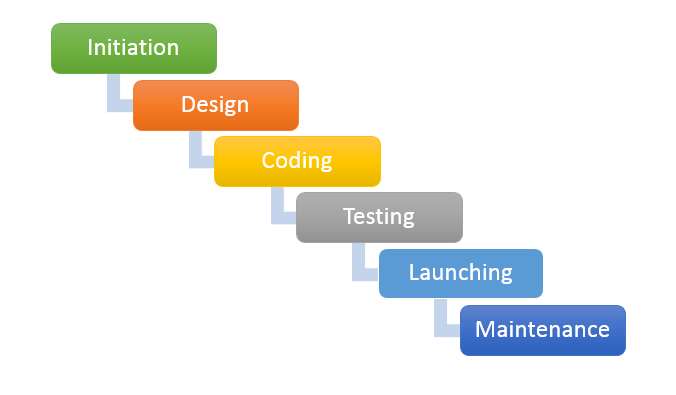Software product development phases

There are many methods of developing a new software product, such as Agile, Waterfall or Spiral. No matter the way of managing the project, however, the Software Development Life Cycle always consists of the same steps. This week Areus explains all 6 steps of SDLC.
1. Initiation phase
The first phase of software product development starts with a request from the client. Whether the order concerns a brand new product, or only a change in an already existing one, it is the most vital part of the process. The final outcome depends on how accurately the requirements are understood by the project managers. After becoming familiar with the customer’s needs, the development team approves the project or proposes some necessary changes in order to make it feasible.
After a thorough analysis of feasibility and possible risks, a detailed documentation is prepared, based on which the structure of the project will be designed and the technology chosen.
2. Design phase
The second phase of software development is a robust process of underlaying the basis for the actual coding. After analysing all the requirements and preparing the software mockup, project managers are able to define a timeline, tasks and the resources needed for the development.
The design phase includes taking some crucial decisions, such as choosing the right technology, in which the application will be written; or designing the detailed workflow of each stage of programming. This is why it is conducted by a cross-functional team, including managers, programmers, QA testers and, even, marketing responsables.
3. Coding phase
The actual coding of the application starts only in the third phase of SDLC. Based on the previously created documentation, product managers allocate specific tasks to each programmers and establish an evaluation plan.
The most efficient methodology of conducting this phase of software development is called agile. Here the development process is divided into smaller periods, called sprints. Breaking down the programming into steps allows for better controlling of the process, faster problem solving and avoiding unpredicted risks. Finally, it gives the possibility of consulting the interim results with the client. More about agile methodology can be read here.
4. Testing phase
Although in Software Development Life Cycle testing appears only after the coding phase, in fact both of them are carried out simultaneously. As it was mentioned in our post about best practices of software testing, the earlier it is started, the lower the cost of possible bugs.
The testing phase includes dozens of processes, from making sure the clients requirements are met, through evaluating the user experience, to examining the actual performance of the application. The latter can be divided into functional, performance and security testing. All in all, the actions undertaken within the Software Quality Assurance aim at delivering a flawless application working under a vast array of devices and conditions and providing the customers with the best possible experience.
5. Product launch
After the development of the application is completed and it has been thoroughly tested, it can be finally released on the market and made available for the users. This is the crucial moment in software development – the first impression made on the users usually decide about further success or failure of the app.
6. Maintenance
Immediately after the deployment, the support processes are launched in order to continuously improve the software. This stage of SDLC lasts as long as the application is officially available to users.
The maintenance stage includes fixing possible bugs and implementing changes suggested by users. What is more, the programmers make sure the technology used stays up to date and security is kept on the highest level.
